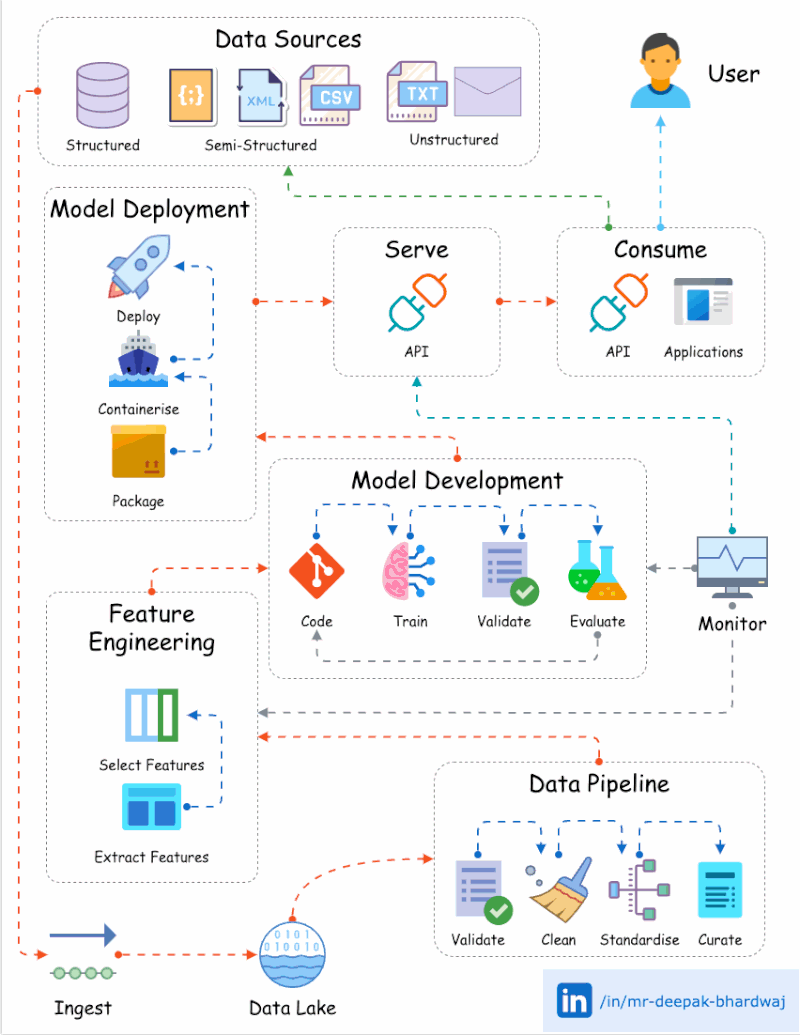
DataOps and MLOps Demystified: DataOps and MLOps optimise data lifecycle and machine learning model development. Both promote collaboration, automation, and alignment of technology and processes for efficient and reliable data flow and business insights.
Critical Components of MLOps:
-
Ingest Data: Begin by capturing raw data from various sources, setting the foundation for subsequent steps.
-
Validate Data: Ensure data quality, integrity, and consistency through rigorous validation techniques.
-
Clean Data: Eliminate inconsistencies, handle missing values and rectify data quality concerns.
-
Standardise Data: Transform data into a uniform format, facilitating seamless processing and analysis.
-
Curate Data: Organize and structure data meticulously, readying it for effective feature engineering and model creation.
-
Extract Features: Uncover insights and patterns by strategically engineering features from the curated data.
-
Select Features: Identify impactful features, discarding redundant ones to enhance model efficiency.
-
Identify Candidate Models: Explore a spectrum of machine learning models tailored to your project’s requirements.
-
Write Code: Implement code for model training and evaluation, paving the way for informed decision-making.
-
Train Models: Employ curated data and extracted features to train models, enabling accurate predictions.
-
Validate Models: Assess model performance using validation data, ensuring alignment with desired outcomes.
-
Evaluate Models: Measure model performance through appropriate metrics, validating its effectiveness.
-
Revisit Candidate Models: Refine model selection based on evaluation results, ensuring optimal choices.
-
Select Best Model: Identify the top-performing model that aligns seamlessly with business objectives.
-
Package Model: Prepare the model for deployment by assembling the necessary files and dependencies.
-
Register Model: Maintain a central repository for tracking and managing deployed models.
-
Containerize Model: Utilize containerisation for enhanced portability and simplified deployment.
-
Deploy Model: Unleash the model in a production environment, ready to deliver tangible results.
-
Serve Model: Expose the deployed model through APIs, enabling seamless integration for practical applications.
-
Inference Model: Harness the model’s capabilities for real-time predictions, driving data-centric decisions.
-
Monitor Model: Institute robust monitoring mechanisms to track performance and behaviour effectively.
-
Retrain or Retire Model: Continuously evaluate, update, or retire the model based on performance insights.
Tham khảo: